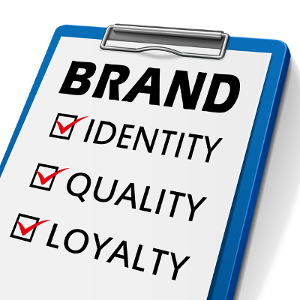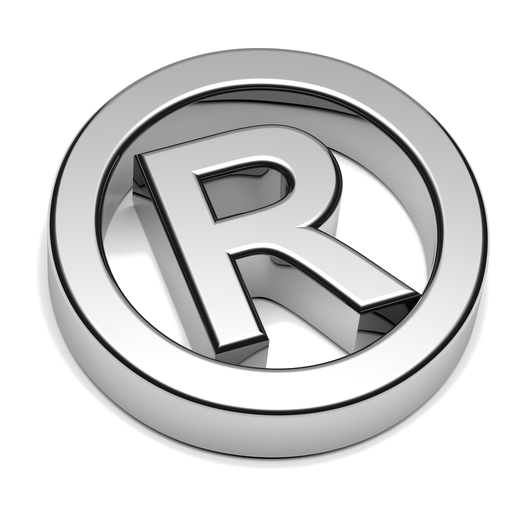An effective brand creates your company’s identity and differentiates your company’s goods/services from the competition. A recognizable identity helps clients attach a positive feeling and reputation to your goods/services offerings (called “good will”). A strong brand is fundamental to consumer recognition in your industry.
The proper way to put the world on notice of your rights to your brand is to obtain a trademark registration. The necessary way keep rights is continuously use and protect that trademark. Trademarks can cover both company names and logos.

Without protection and preservation, companies risk disappearing into obscurity. Have you ever noticed that there is no company has exclusive brand rights to “Yo-Yo?” Would it surprise you to learn that the inventor of the Yo-Yo lost the name because it was not registered properly? The same is true of other once powerful brands. Some of the more famous examples are Escalator, Aspirin, Thermos, and even Apple’s App Store – all of which were lost because they were either not properly protected and preserved.
Making sure you put your best foot forward starts with making sure you are standing on solid ground. Before investing heavily in brand that identifies you and your values, make sure you take the right steps to protect and guard it. Otherwise others could free-ride on your hard work.

Creating a Distinctive Trademark
The first thing to consider when creating a brand is whether it is capable of uniquely identifying your business or business offerings. The key to creating effective trademark rights is making sure that the customers don’t get confused between your brand and someone else’s brand.
When starting out, it’s critical to avoid using names that are too similar or otherwise might be confused with a competitor. This is perhaps the single biggest reason why companies are unable to protect their brand(s).
It’s also best to avoid names that describe the types of goods/services you sell. If the name(s) you are thinking about is something generic or descriptive, they are less likely to receive protection. A name like “Wireless Carrier and Cell Phone Shop” may not be eligible for protection. But a name like “Verizon” which is a unique made-up word (mashing the words vertical and horizon together) is a good candidate.
Making up a new word is not required for trademark protection. But the more you can make your name stand out, the greater your chance of gaining legal protection. Arbitrary or fanciful names are the best candidates (like Apple for computers and Google for search engines).
If coming up with a totally unique name is too challenging there is good news. The potential exists to gain trademark rights if it meets certain other criteria. For example, there is an option to trademark names that might “suggest” the kind of business you are in. These names usuallly require a couple of mental steps to connect the name to the type of goods/services sold. An example is “acoustic research” for stereo speakers.
Finally, an often-overlooked consideration when creating a new brand (or sub-brands) is to consider the connotation of your brand name. What kind of feelings or ideas would the name invoke in others who hear it? While this factor has some effect on trademark rights, we think it is important to both uniquely-position a brand as well as convey it’s intended [emotional] meaning.
Register the Trademark of a Brand Name
Once you’ve got your unique brand name completed (and perhaps a new logo as well), the next step is make sure you register the branding elements! It is much easier to enforce a brand that has a trademark registration.
This might be an over-simplification, but the four principal things needed to register a trademark are: (1) the brand name (or logo) you want to protect; (2) a description of the goods and services you are identifying with the trademark; (3) the date of the first time you used the mark in commerce in the U.S. (and other places in the world); and (4) a sample showing how the trademark has been used in conjunction with the goods and/or services you sell. It’s also possible to obtain limited-time and limited-rights protection over a trademark you plan to use in the future.
By taking these steps, and provided the trademark office agrees, you will have taken the first major step to ensuring that nobody else can use your unique name!

Protecting your Logo
When you think about a logo, one may think that a trademark registration is the only way to protect it. The truth is, depending on how artistic or expressive a logo is, it may be eligible for both trademark and copyright protection. Trademarks are not intended to prevent “copying” per se. Instead, they are intended to prevent confusion in the marketplace, meaning the same name could be used by two different entities as long as they are in different markets (like Ace Hardware and Ace Bandages). On the other hand, copyrights are meant to protect creative works and prevent anyone from copying an original work (irrespective of industry), so the more ornate or creative a logo is, the more likely it is to garner protection. Using both approached could give your brand two layers of protection.

Being Aware
The key to preserving trademark rights is to be watchful. Obtaining a trademark registration is just the first step. It’s also important to monitor how and when someone else mentions/uses your brand. It is important to be particularly vigilant about unauthorized uses and/or other negative feedback.
If this seems like a lot of work, you are right. It can be labor intensive. Larger companies have entire teams of people dedicated to preventing unauthorized use of their brands. The good news is you don’t have to do it alone. There are trademark monitoring services that provide reports every month/quarter/as desired for a fee. For those on a budget, it’s also possible to use less comprehensive (DIY) tools like Google Alert. This handy service uses the Google search engine and sends a message to a user when it finds someone using your brand. A user can set the Google Alert to scour web pages, blogs, news articles, or anything else publicly accessible on the internet. It’s not a complete solution, but better than doing nothing at all.
Your First Consultation
When you start thinking about different ways to protect your brand, you should consult a qualified intellectual property attorney about options available. Here are some of the more common considerations for a first consultation:
- Are you interested in a regional, national, or international trademark registration?
- What trademark(s) you are thinking about applying for and have you applied before?
- If you are just starting off, it’s usually best to have one name and a couple backup options.
- The kinds of goods and services your brand offers now and may offer in the future?
- Any logos you currently use or logo ideas you are thinking of using?
- Any concerns about other brands that use your name or a similar name to yours?
- Once you have armed yourself with answers to these questions, you are on your way to protecting your new brand (and future portfolio of brands)!
More may be learned at our trademark registration services page.
We’re Here to Help
The attorneys at Nexio Law Firm are committed to helping our clients achieve their objectives. We can be reached at (949) 478-6830 or complete the contact form and we’ll be in touch soon.